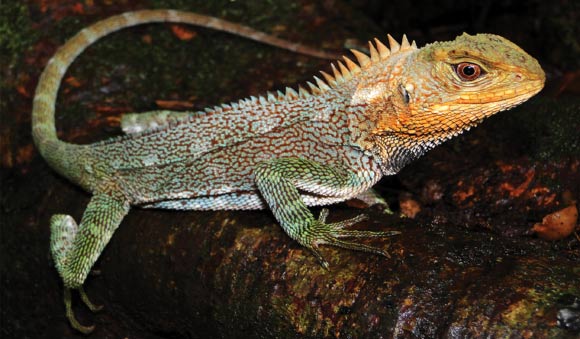An international team of researchers has discovered a new species of the lizard genus Enyalioides living in the premontane forest of the Río Huallaga basin in central Peru.
“The Huallaga drainage flows north from the Cordillera Oriental of central Peru and has an extension of 1,138 km, which makes it the largest tributary of the Marañon river,” said lead author Dr. Pablo Venegas, a researcher at the Instituto Peruano de Herpetología, Rainforest Partnership, and the Centro de Ornitología y Biodiversidad, and his colleagues.
“This basin harbors a great variety of ecosystems, including the Yugas, which are considered a shelter of endemic birds, mammals and amphibians.”
“In an effort to improve our knowledge on the herpetofauna of the Huallaga river basin, we carried out field surveys between 2011 and 2018, which led to the discovery of a new species of wood lizard.”
The newly-discovered species belongs to the wood lizard genus Enyalioides.
“Among hoplocercine lizards, wood lizards (Enyalioides) represent one of the South American lizard groups with the highest species discovery rate (corrected for clade size) of this century,” the researchers said.
“Our discovery increases to 16 the number of known species of Enyalioides, of which only seven were known in previous centuries.”
Named the Feiruz wood lizard (Enyalioides feiruzae), the new species comes in a stunning variety of colors.
Males can have brownish turquoise, gray, or greenish brown backs traced with pale lines.
Females, in turn, can be greenish brown or floury brown, with faint dark brown lines on their back, limbs and tail, and spots on the sides.
“We believe Enyalioides feiruzae might have established as a separate species after it got geographically separated from a very similar lizard, Enyalioides rudolfarndti, possibly as a result from tectonic activity and climatic oscillations that occurred from the Late Oligocene to the Early Miocene,” the scientists said.
“The habitat of Enyalioides feiruzae is very fragmented by croplands and pastures for cattle ranching, and for now we only know of a single protected population in the Tingo Maria National Park.”
“Much more remains to be discovered about the size and distribution of Enyalioides feiruzae populations and their ability to survive and adapt in a fragmented landscape.”
The discovery is described in the journal Evolutionary Systematics.
_____
P.J. Venegas et al. 2021. A new species of wood lizard (Hoplocercinae, Enyalioides) from the Río Huallaga Basin in Central Peru. Evolutionary Systematics 5 (2): 263-273; doi: 10.3897/evolsyst.5.69227








